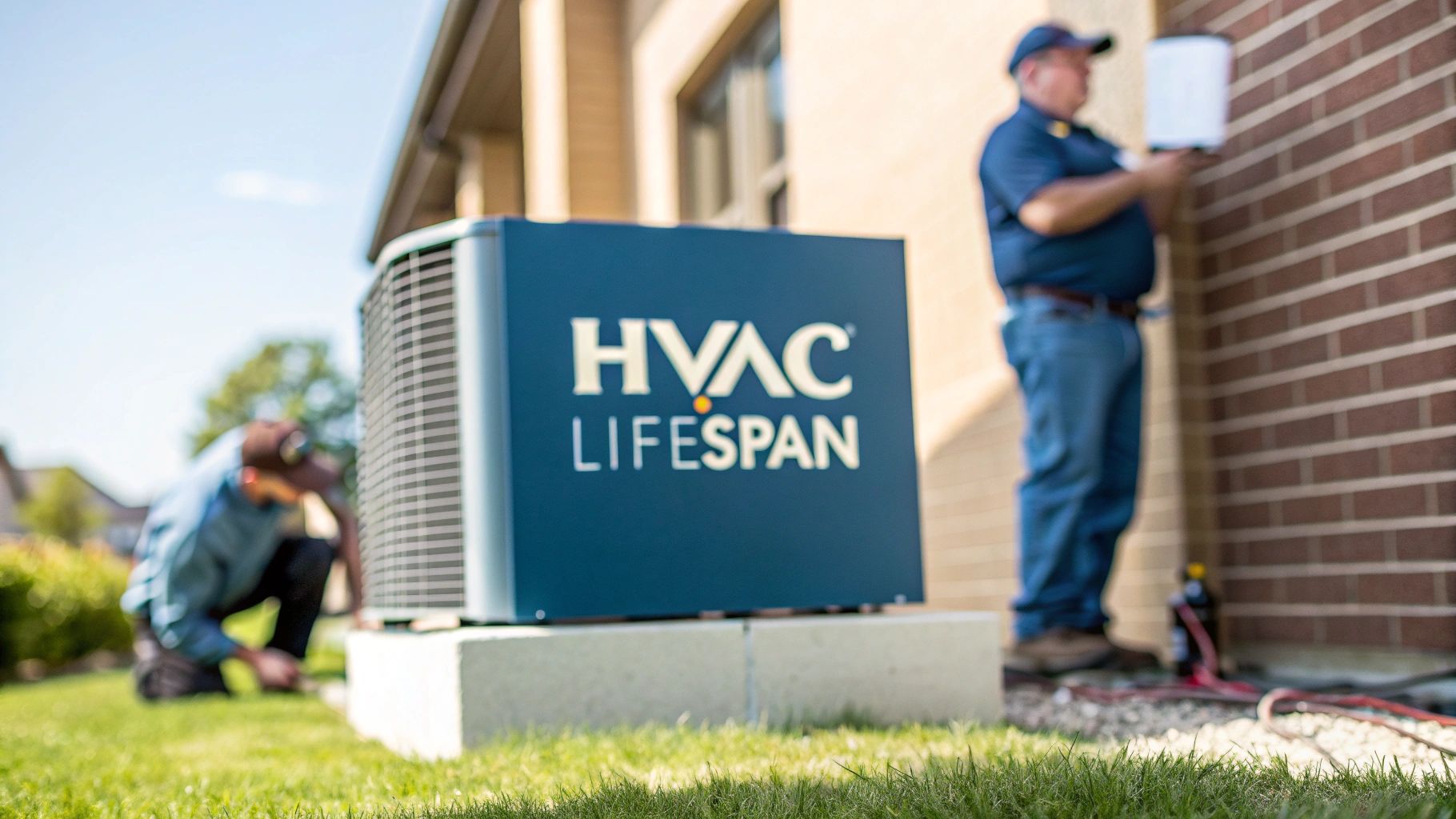It's the big question every homeowner asks: "How long will my HVAC system last?" While there's no single magic number, a good rule of thumb is that a well-cared-for system should give you 15 to 25 years of service.
Think of it like the mileage on a car. That number on the sticker is just an estimate; the real lifespan depends on the make and model, how you drive it, and whether you keep up with oil changes. Your HVAC system is no different.
What's a Realistic Lifespan for an HVAC System?
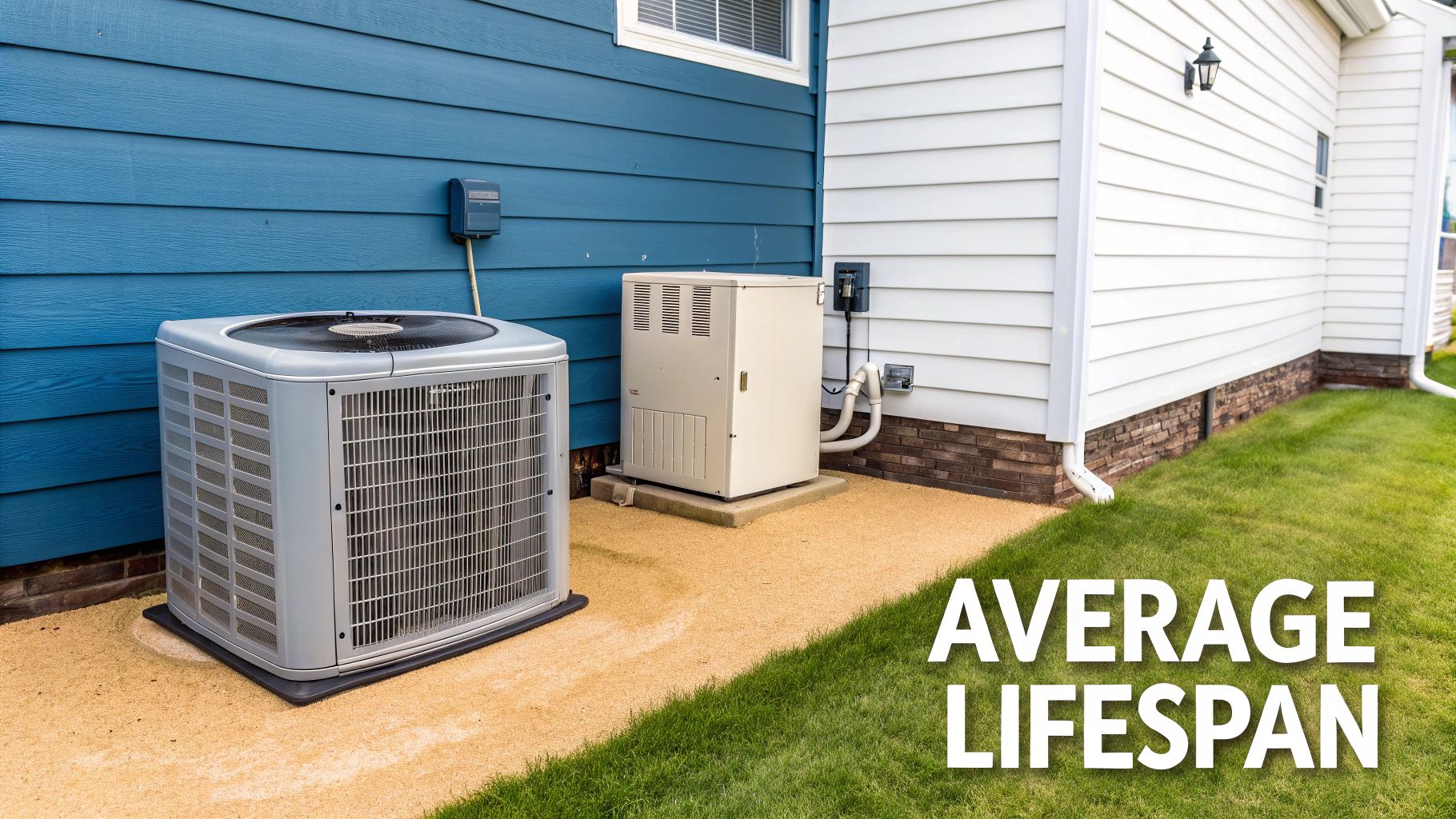
Just as "car" can mean anything from a sports coupe to a heavy-duty truck, "HVAC" is an umbrella term for a whole family of equipment. Each component has its own typical lifespan. A durable gas furnace, for instance, will almost always outlast an air conditioner that’s battling a sweltering summer year after year.
Industry-wide, the average lifespan lands somewhere between 15 and 20 years, but this can shift based on the type of equipment and where you live. For example, some industry data, like this HVAC industry report from ServiceTitan, shows that heat pumps, which work year-round, often have a shorter lifespan of around 10 to 15 years. In contrast, a furnace might last well beyond 20 years.
To give you a clearer idea, let's look at the average lifespan for the most common types of HVAC equipment. Knowing these baseline numbers is the first step in figuring out how much life your own system has left.
But remember, these figures aren't set in stone. They're what you can expect under normal operating conditions with consistent, professional maintenance. Skipping tune-ups can easily slash these lifespans, while diligent care can help you get a few extra years out of your investment.
Here's a quick reference guide that breaks down the expected service life for different residential heating and cooling systems. This will give us a practical starting point before we get into the nitty-gritty of what you can do to keep your system running longer.
Expected Lifespan for Common HVAC Systems
| HVAC System Type | Average Lifespan Range (Years) |
|---|---|
| Central Air Conditioner | 15-20 |
| Gas Furnace | 20-30 |
| Heat Pump | 10-15 |
| Ductless Mini-Split | 12-20 |
| Boiler | 20-35 |
As you can see, there's quite a bit of variation. A boiler is built like a tank and can last for decades, while a heat pump does double duty and tends to wear out faster. Now, let’s explore the factors that push these numbers one way or the other.
Key Factors That Determine HVAC Longevity
The lifespan ranges we’ve discussed aren’t set in stone; think of them more like a baseline. The real story of how long your system will last is written by a handful of critical factors.
It's a lot like owning a car. Two identical models can have vastly different lifespans. One might be driven gently in a mild climate with regular oil changes, while the other is pushed to its limits in extreme weather with spotty maintenance. The same principle applies directly to the average lifespan of an HVAC system. Getting a handle on these variables gives you a surprising amount of control over your investment.
The Impact of Installation Quality
The single most important day in your HVAC system’s life is the day it’s installed. A high-end unit that’s put in poorly is doomed from the start. It’s like building a beautiful house on a shaky foundation—it’s never going to perform as it should or last as long as you expect.
A professional, high-quality installation gets several key things right from the get-go:
- Proper Sizing: The technician matches the unit perfectly to your home's size and cooling needs. A system that's too big will "short-cycle," turning on and off constantly and putting massive wear on the compressor. One that's too small will run nonstop, straining every component just to keep up.
- Correct Ductwork Connection: Leaky or poorly sealed ducts can waste up to 30% of your conditioned air. This forces your system to work much harder to hit the temperature you set, shortening its life.
- Accurate Refrigerant Charging: Too much or too little refrigerant is a death sentence for the compressor, which is the heart of your AC system. An expert gets the level just right.
Simply put, a top-tier installation from a reputable contractor can add years to your system's life, while a poor one can subtract them. It is the single most important factor you can control from day one.
Environmental and Usage Patterns
Where you live and how you use your system also play a huge role. A furnace in Minnesota is going to have a much tougher job than one here in Florida. By the same token, an air conditioner in Palm Beach County works a lot harder than one in Maine.
Coastal environments, for instance, expose outdoor units to salty air, which can speed up corrosion on coils and other metal parts. Likewise, intense desert heat or relentless humidity places a constant, heavy load on the entire system.
Your personal habits matter, too. Setting your thermostat to a frigid temperature in the summer or cranking the heat way up in the winter forces the unit to run for long, brutal stretches, accelerating wear and tear. A system that runs 8 hours a day will naturally outlast an identical one that runs 16 hours a day. Making smart choices, like looking into your guide to ENERGY STAR HVAC systems, can significantly reduce this strain.
How Regular Maintenance Extends Your System's Life
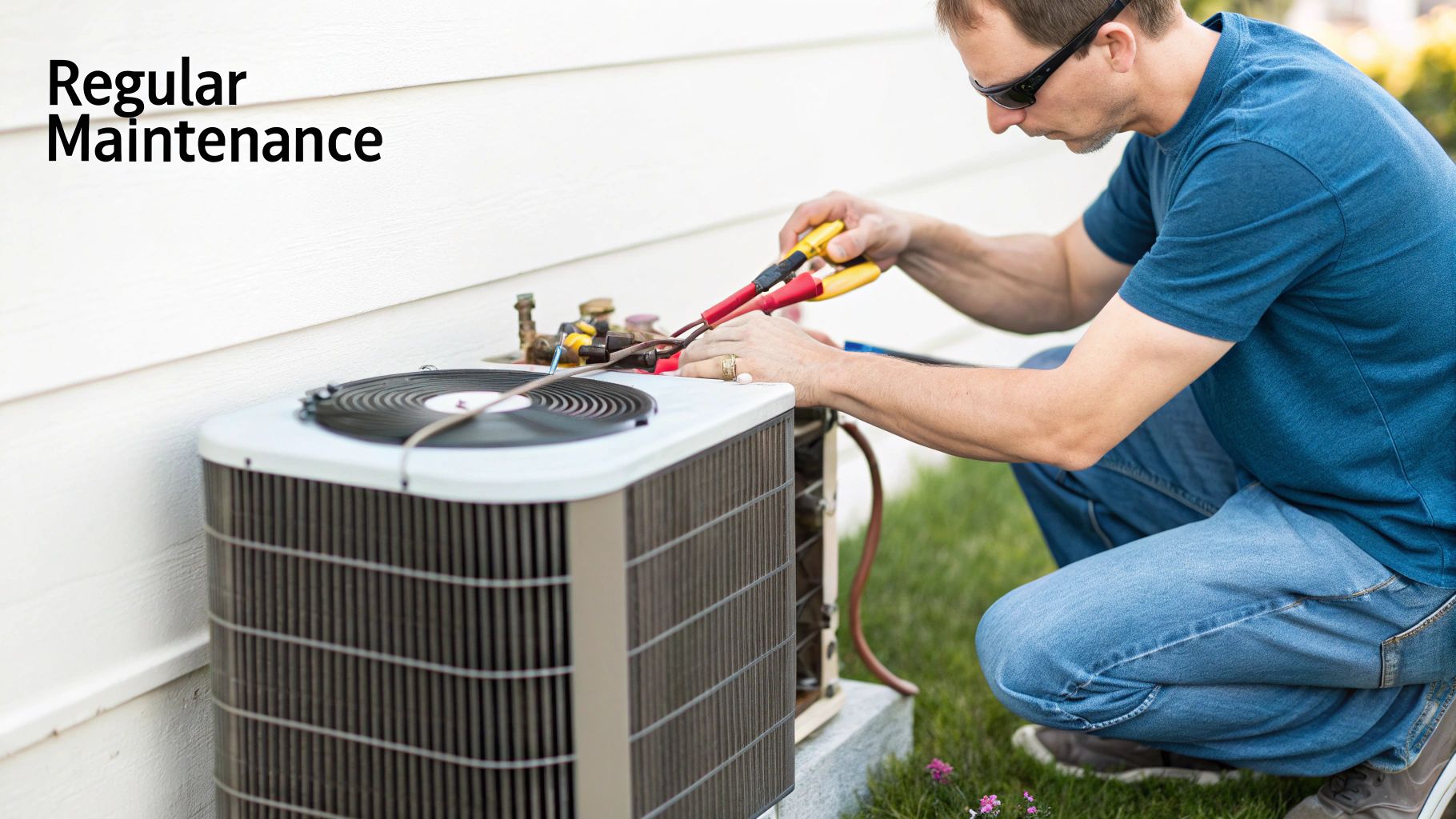
If you want to get the most out of your HVAC system, nothing is more important than preventive maintenance. Think of it like a regular health check-up for your home's hardest-working appliance. Skipping it is like never changing the oil in your car—eventually, a small, fixable issue spirals into a complete breakdown.
A small investment in annual professional care can save you from expensive emergency repairs, boost your energy efficiency, and add years of reliable service to your system. It's the difference between a unit that dies on the hottest day of the summer and one that keeps you comfortable for two decades.
What a Professional Tune-Up Really Involves
A real tune-up is so much more than just swapping out an air filter. It’s a deep-dive inspection and cleaning that targets the parts of your system that take the most abuse. A certified technician will run through a whole checklist of critical tasks.
These steps are designed to directly counteract the daily strain your system is under, making sure every component works together smoothly instead of grinding itself down.
Here’s what a good tune-up should always include:
- Cleaning Coils: Over time, your indoor and outdoor coils get caked with dirt and grime. This buildup chokes the system, forcing it to work much harder to cool your home. A good cleaning lets it breathe again.
- Checking Refrigerant Levels: If your system’s refrigerant charge is too low or too high, it can destroy the compressor—the heart of your AC unit and its most expensive part. A technician makes sure the levels are perfect.
- Verifying Electrical Connections: Loose or corroded wires are not only a fire hazard but also cause system failures. Technicians inspect and tighten all connections to keep things safe and reliable.
- Lubricating Moving Parts: All those motors and fans need proper lubrication to cut down on friction. It’s a simple but crucial step that prevents premature burnout.
To get a better idea of what a comprehensive service looks like, check out this complete HVAC preventive maintenance checklist.
The Proven Benefits of Proactive Care
The connection between consistent maintenance and a longer average lifespan of an HVAC system isn't just a hunch—the data backs it up. When a system runs clean, it doesn't have to overwork itself, which means less wear and tear on every single part. That translates directly into a longer, more dependable service life.
Planned preventive maintenance is a direct investment in your system’s durability and your home’s efficiency. Neglecting it just means you end up paying more for worse performance.
In fact, studies consistently show the financial upside of regular upkeep. A proper maintenance plan can lead to annual energy savings of 5-20% and cut total repair costs by as much as 50% when compared to just fixing things as they break.
At the end of the day, scheduling that annual tune-up is the single best thing you can do to push your system’s lifespan closer to its maximum potential. It ensures your HVAC runs smoother, safer, and for a whole lot longer.
Warning Signs Your HVAC Is Nearing the End
Even the best HVAC system has a finite lifespan. The good news is, they rarely just die overnight. Most systems will give you plenty of warning signs before they completely fail—think of it like a car engine that starts making funny noises long before it leaves you stranded. Learning to spot these signals means you can plan for a replacement on your own terms, not in a panic during a sweltering Florida heatwave.
The first clue is often the simplest: age. Proper maintenance can certainly squeeze a few extra years out of a unit, but every machine has its limits. For most central air-conditioning systems, that limit falls somewhere between 12 to 15 years. If your unit is creeping into that territory, it’s time to start paying closer attention and thinking about a replacement budget. For a deeper dive into system efficiency, the folks at ahrinet.org have some great resources on when to call in a pro.
Strange Noises and Foul Odors
Your air conditioner should be a quiet workhorse, humming away in the background. So, when it starts making a racket, listen up. Those new, loud sounds aren't just annoying; they're cries for help from failing mechanical parts.
- Grinding or Squealing: Sharp, high-pitched noises often mean the motor's bearings are shot or a fan belt is about to give out.
- Banging or Clanking: This is a big one. It usually means a major component like a connecting rod or piston pin has broken loose and is banging around inside, which can cause catastrophic damage.
- Constant Clicking: A persistent clicking sound often points to a problem with the electrical controls or a failing thermostat.
Your nose can be just as helpful as your ears. Musty or burning smells are serious red flags. A musty, "dirty sock" smell is a classic sign of mold or mildew growing in your ductwork or on the evaporator coil. If you smell something burning, it could be an overheating motor or frayed wiring—a potential fire hazard.
Declining Performance and Rising Costs
Sometimes, the signs are less dramatic. Your system might still be running, but it just isn't getting the job done like it used to. This drop-off in performance almost always hits you right in the wallet.
One of the most reliable signs of a dying HVAC system is a sudden, unexplained jump in your energy bills. As parts wear down, the unit has to work harder and run longer to cool your home, guzzling electricity in the process.
Keep an eye out for these other performance issues, too:
- Inconsistent Temperatures: You have hot spots and cold spots all over the house.
- Weak Airflow: The air trickling out of your vents feels weak and anemic.
- Increased Humidity: Your home feels muggy or damp, even with the AC on full blast.
Finally, if you and your HVAC technician are on a first-name basis, that’s a problem. Frequent repair calls are a clear signal that your system is living on borrowed time. At some point, it stops making sense to keep patching up an old unit when that money could be a down payment on a new, reliable, and far more efficient system.
Deciding Between a Repair and a Full Replacement
When your HVAC system starts acting up, you’re stuck with a tough question. Do you sink more money into another repair, or is it finally time to bite the bullet and invest in a brand-new unit? It’s a stressful decision, but there’s a handy little guideline that can help clear things up.
It's called the “5,000 Rule,” and it's a quick bit of math to see which option makes more financial sense.
The 5,000 Rule: Just multiply your unit's age in years by the estimated cost of the repair. If that number is over $5,000, it's probably time to start shopping for a replacement.
Let's say your air conditioner is 12 years old and the technician quotes you $500 for a repair. You'd calculate 12 x 500 = 6,000. Since $6,000 is well over the $5,000 mark, the rule suggests that repair money would be better spent on a new, more reliable system. It's a smart way to avoid pouring cash into a unit that's already on its way out.
Thinking Beyond the Immediate Fix
While the 5,000 Rule is a great starting point, it’s not the only thing to consider. The energy efficiency of your current system is a huge factor. An old unit with a low SEER (Seasonal Energy Efficiency Ratio) rating is secretly costing you money every month on your power bill, even when it's "working."
There's also the issue of refrigerant. Many older systems run on R-22, a type of Freon that’s been phased out because it's bad for the environment. The remaining supply is incredibly expensive, so what seems like a simple refrigerant top-off can turn into a shockingly costly repair. We cover all these factors in more detail right here: https://floridacoolinggroup.com/when-to-replace-hvac/
Often, your system will give you clues that it's nearing the end. This decision tree breaks down some of the most common warning signs.
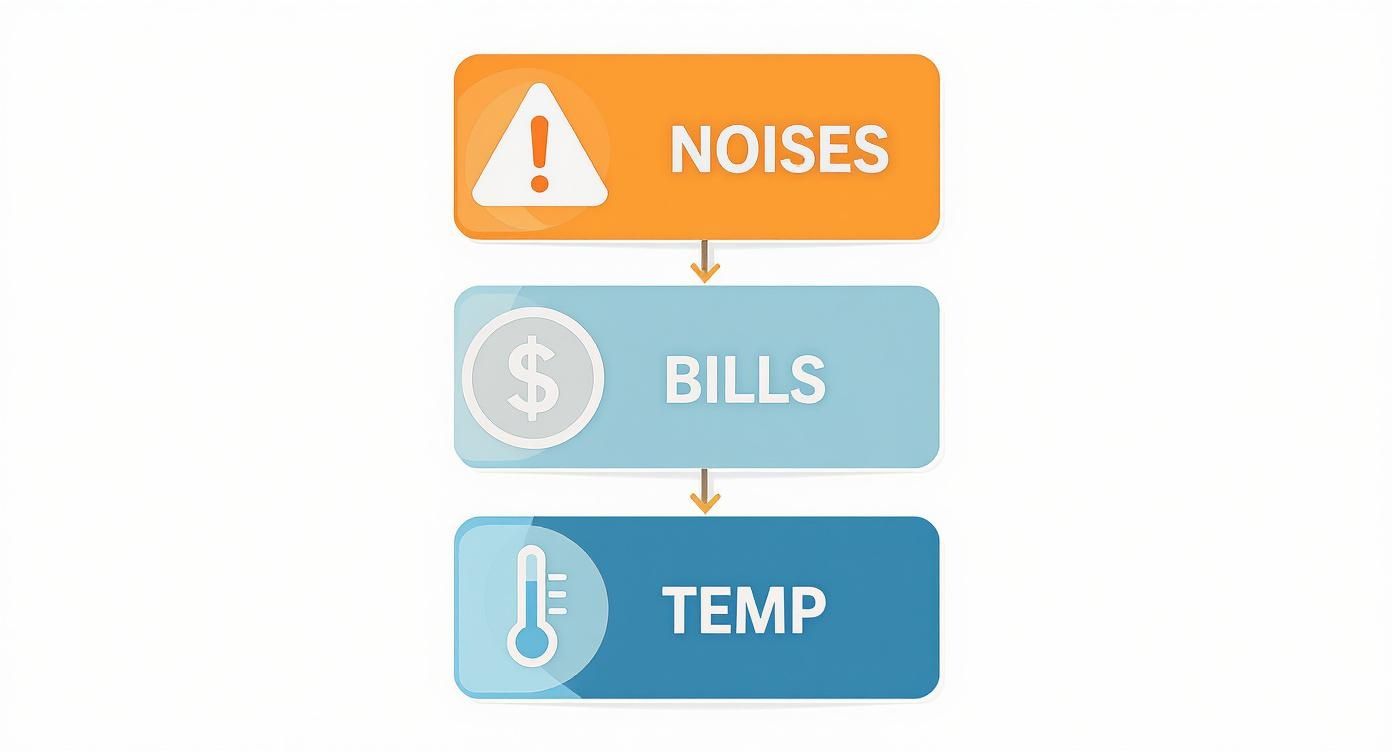
As you can see, things like weird noises, inconsistent temperatures, and skyrocketing bills are often connected. They’re all symptoms of a system that's struggling to keep up.
Making the Call: A Quick Comparison
To help you sort through the pros and cons, here’s a table that lays out when it makes sense to repair versus when you should seriously consider a replacement.
Repairing vs. Replacing Your HVAC System
| Consideration | Best Case for Repair | Best Case for Replacement |
|---|---|---|
| Age of Unit | The system is under 10 years old and has been well-maintained. | The unit is over 12-15 years old and nearing the end of its expected lifespan. |
| Repair Cost | The repair is a one-time fix that costs less than 30% of a new unit. | The repair cost exceeds the 5,000 Rule or is 50% or more of the replacement cost. |
| System Efficiency | Your current unit has a decent SEER rating and energy bills are stable. | Your energy bills are steadily climbing, and the unit has a low SEER rating. |
| Frequency of Issues | This is the first major repair in several years. | You've had multiple repairs in the last two years; the unit is unreliable. |
| Refrigerant Type | Your system uses the modern R-410A refrigerant. | The unit uses the outdated and expensive R-22 refrigerant. |
Ultimately, choosing to repair is about fixing an isolated problem in an otherwise healthy system. Opting for a replacement is about investing in long-term reliability, efficiency, and peace of mind when your current unit is showing clear signs of decline.
Visualizing the Long-Term Value
It’s easy to get sticker shock from the price of a new HVAC system, but it’s crucial to look at the bigger picture. A new unit means lower monthly energy bills, the comfort of knowing it won't break down during a heatwave, and a solid warranty to back it up. That's a level of security you just can't get from patching up an old, failing system.
As you start researching your options and looking for reputable local companies, pay attention to their online presence. A professional HVAC website design often signals a company that is serious about its reputation and customer communication. Taking the time to weigh all these factors will help you make a confident choice that keeps your home comfortable and your budget intact for years to come.
Common Questions About Your HVAC's Lifespan
Even when you know the basics, real-world questions always pop up. It's one thing to know the average lifespan of an HVAC system, but it's another to apply that to the unit humming away outside your window right now. Let's dig into a few of the questions I hear most often from homeowners.
Getting these answers straight can help you make smarter choices and keep your system running smoothly for as long as possible.
Does the HVAC Brand Really Make a Difference?
This is a big one, and the answer might surprise you. While it's true that top-tier brands often use premium parts, the quality of the installation and your commitment to maintenance are vastly more important for the lifespan of your system. Think of it this way: a mid-range unit installed by a seasoned pro and serviced every year will almost always outlast a high-end brand that was slapped in by an inexperienced crew and then ignored.
Your first step should always be to find a reputable, certified installer you trust. From there, pick the best brand they recommend that fits your budget. The installer's skill truly lays the foundation for a long, trouble-free service life.
A perfect installation of a good system is always better than a poor installation of a great system. The technician's expertise has a much bigger impact on how long your unit lasts than the brand name on the side of it.
Can a Smart Thermostat Really Extend My System's Life?
Absolutely. A smart thermostat can definitely help your system last longer, just not in the way you might think. It’s not magic, but it is smart. By learning your daily routines and optimizing when your system runs, it cuts down on a ton of unnecessary work. This means less daily wear and tear on the most critical parts, like the compressor and fan motor.
So while it won't save a system that's already on its last legs, it’s a fantastic way to help a healthy system run more efficiently year after year. That efficiency translates directly to a longer life and, as a nice little bonus, lower energy bills.
What's the Single Most Important Thing I Can Do Myself?
If you do only one thing, make it this: check and change your air filter regularly. It’s that simple. A dirty, clogged filter is like forcing your system to breathe through a straw. It has to work incredibly hard to pull air through, putting a massive strain on the fan motor and the entire unit.
This constant struggle can cause parts to overheat and fail way sooner than they should. Get in the habit of checking your filter monthly and replacing it every 1-3 months. The exact timing depends on your filter type and whether you have pets, smokers, or allergy sufferers at home. It’s a cheap and easy task with a huge payoff.
Should I Replace Just the Outside AC Unit, or the Whole System?
This is a classic dilemma, but the answer is almost always to replace the entire system—both the indoor and outdoor units—at the same time. The outdoor condenser and the indoor evaporator coil are designed by the manufacturer to work together as a perfectly matched team.
When you try to pair a new, high-efficiency outdoor unit with an old indoor coil, you're asking for trouble. Here’s what usually happens:
- Wasted Efficiency: The system will never hit its advertised SEER (efficiency) rating, meaning you'll pay more on your energy bills.
- Lousy Performance: You'll likely notice the system struggles to cool your home or control humidity effectively.
- Excessive Strain: The mismatch forces the new compressor to work harder, which can lead to it failing years ahead of schedule.
- Voided Warranty: Most manufacturers will void the warranty on their new unit if it’s connected to an old, unapproved indoor coil.
To get the performance, efficiency, and long life you’re paying for, always replace both components as a matched set. It’s the only way to protect your investment.
At Florida Cooling Group, we believe an informed homeowner is an empowered one. If you're in Palm Beach County with more questions or need an expert eye on your system, our certified technicians are here 24/7 to help. Contact us today to schedule a consultation.
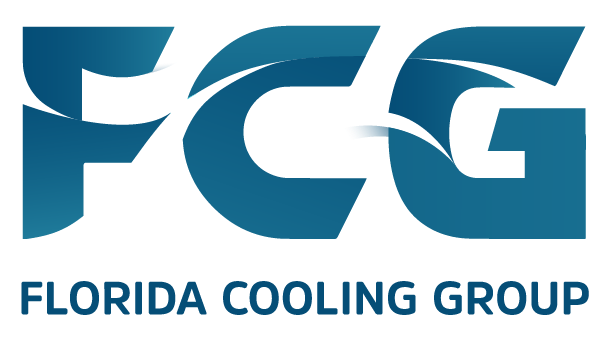
 (561) 400-2205
(561) 400-2205